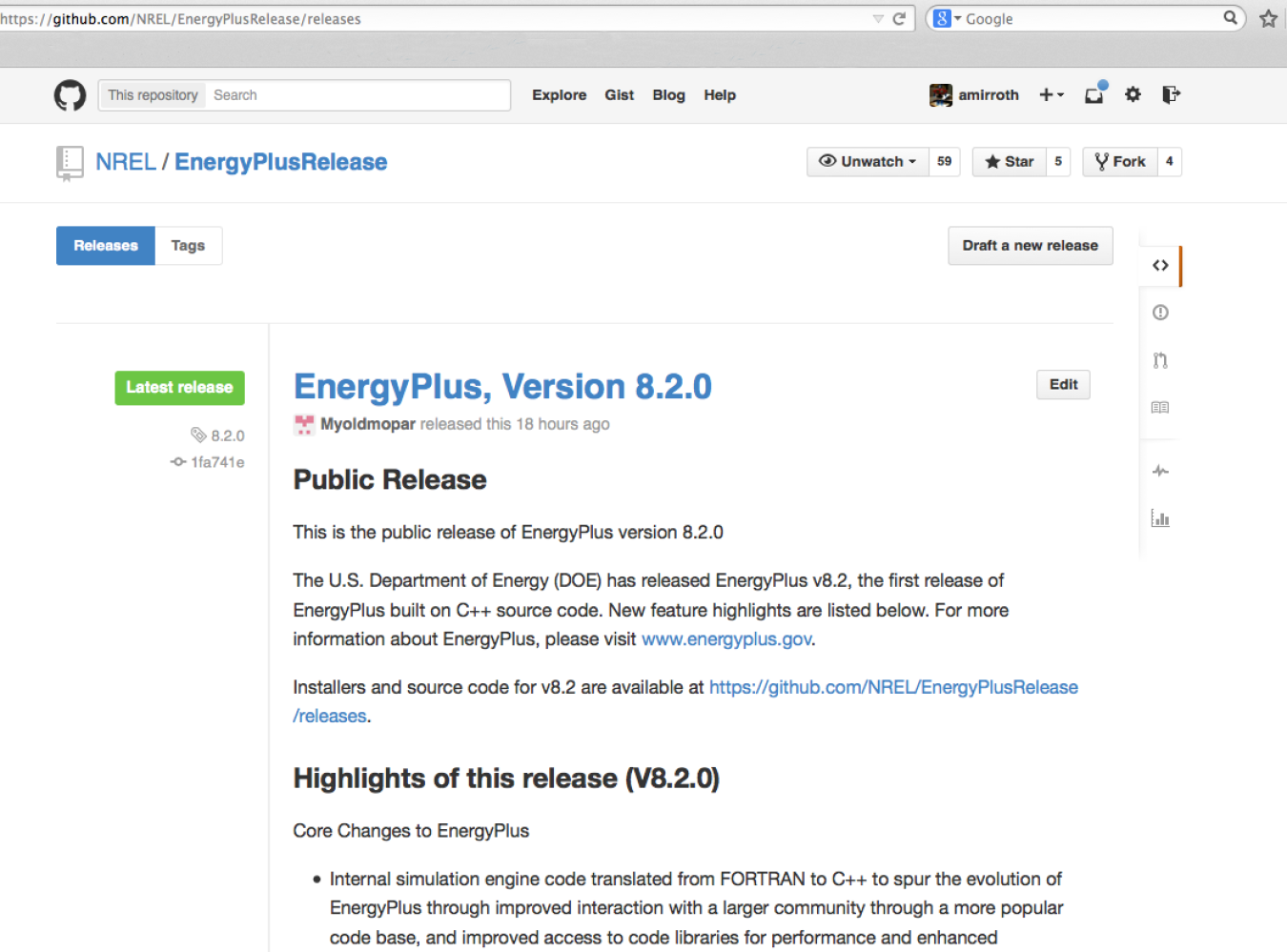For the first 17 years of its existence, EnergyPlus was written in the FORTRAN programming language. Now, DOE is releasing EnergyPlus 8.2.0, the fi...
October 1, 2014
Version 8.2.0 of EnergyPlus is available for download from the popular social coding platform GitHub at https://github.com/NREL/EnergyPlusRelease/releases
DOE is responsible for the development of a number of software programs. One of the most influential is EnergyPlus™ which models whole-building energy and water use. Developed with Building Technologies Office (BTO) funding and direction since 1997. EnergyPlus™ lets architects, engineers, energy consultants, energy-efficiency program administrators, and researchers model the effects of design and operation alternatives on building energy performance. EnergyPlus is the basis for building energy-efficiency standards and is the engine inside commercial software products. It has a large and diverse user community.
For the first 17 years of its existence, EnergyPlus was written in the FORTRAN programming language. Now, DOE is releasing EnergyPlus 8.2.0, the first version written in C++. More modern than FORTRAN, C++ has better built-in features for software development, testing, and maintenance. It also has a larger ecosystem of software libraries and development tools, better access to new high-performance hardware, and a significantly larger developer community. DOE believes that the language change will help spur the evolution of EnergyPlus and its integration into additional applications and services.
The EnergyPlus C++ transition was initiated by Autodesk, while the translation work was performed by Objexx. Objexx used automated tools that translate code without changing its structure or human readability. This combination of automation and human-readable output was essential to this effort as EnergyPlus has more than 700,000 lines of code and is a living, evolving product. In November 2013, Autodesk granted DOE rights to the translated source code. Autodesk and Objexx then worked with DOE’s development team to test the new code to ensure that it is functionally equivalent to the original and would not disrupt users and vendors. The team also worked to improve the code’s execution speed. For many models, version 8.2.0 will be at least 20% faster than version 8.1.0. Autodesk and Objexx will continue working with DOE’s team on EnergyPlus runtime performance going forward.
As usual, this EnergyPlus update also incorporates new and enhanced modeling features including improved HVAC equipment auto-sizing routines, improved models for ground heat exchange, new models for natural ventilation, and control options for radiant and cooling systems. Version 8.2.0 of EnergyPlus is available for download from the popular social coding platform GitHub at https://github.com/NREL/EnergyPlusRelease/releases.
To learn more about EnergyPlus and other building energy modeling projects and resources, visit the Building Technologies Office’s new Building Energy Modeling website.
Dr. Amir Roth
Dr. Amir Roth is the technology manager for BTO’s Building Energy Modeling (BEM) subprogram and has served in that role since 2010. From 2001 to 2010 he was first an assistant and then an associate professor with tenure of Computer and Information Sciences at the University of Pennsylvania in Philadelphia. He graduated magna cum laude with a B.S. in physics from Yale University and holds a Ph.D. in computer science from the University of Wisconsin—Madison where he won a dissertation award in 2001. He is a member of the American Society of Heating, Refrigeration, and Air-Conditioning Engineers (ASHRAE), and the International Building Performance Simulation Association (IBPSA).
Email Amir Roth ►



